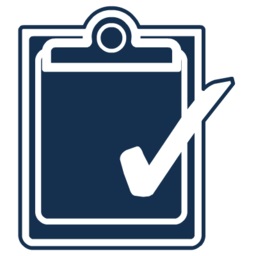Updated: 9.12.25
NEW - Office Hours
Do you need help with lead in water testing, your HASS Plan, or your Annual Statement? Sign up for our Healthy and Safe Schools Office Hours!
Office Hours are held every 1st and 3rd Wednesday at 11 am.
Zoom Registration Link
* 10/1/25 Office Hour has been released due to a scheduling conflict with an ODE all staff meeting. Thank you for understanding!
 Lead in Water Testing
Lead in Water Testing
The
Healthy and Safe Schools (HASS) Plan promotes transparency around
lead in water testing by school districts, ESDs, and charter schools. Lead in water testing is required by Division 22 Rules (OAR 581-022-2223). All school districts, ESDs, and charter schools must test all required fixtures for elevated levels of lead at least every 6 years starting July 1, 2020 per
OAR 333-061-0400. The basic schedule for when testing is to occur is set by the Oregon Department of Education (ODE), with specific facility test times for districts testing over multiple years to be determined cooperatively between ODE and the district.
Elevated levels of lead in the body can cause developmental delays, learning difficulties, behavioral issues, and reductions of cognitive ability as well as other serious medical conditions. Lead poisoning can cause neurological, physical, and behavioral symptoms. The EPA classifies lead as a probable human carcinogen, and since lead builds up in the body over time and does not dissipate, ingestion of even small quantities of lead is a serious concern. As such, all potential sources of lead must be reduced or eliminated.
If you have any questions contact our team by email at
ODE.WaterTesting@ode.oregon.gov or by phone at 971-208-0406.
Lead in Water Testing Process
The lead in water testing process, though not complicated, involves many steps. The graphics below show a high level overview of the lead in water testing process. The icons are used in the lead in water testing Training Modules for a quick glance of which step of the process each section of the modules are explaining.

 Lead in Water Testing Training Modules
Lead in Water Testing Training Modules
The lead in water testing training modules have explanations and step by step instructions for the lead in water testing requirements and procedures. The training overview module summarizes the different steps in the process. For an in-depth explanations and directions for each step, see the individual training modules below.
In-Depth Training
 Mandatory Lead Testing Schedule
Mandatory Lead Testing Schedule
When do I test buildings? Oregon Department of Education (ODE) has created an ongoing schedule for when each school district, ESD, and charter school is required to test their buildings for lead. The purpose of this is to help regulate the number of fixtures being tested each year to avoid exceeding the capacity of Oregon’s lead testing labs and ensure adequate funding for reimbursement.
The
Mandatory Lead Testing Schedule can be used to determine what year(s) your ESD, district, or charter school is required to conduct lead testing. Your testing schedule should also be in your approved HASS Plan. If you have questions about the required testing schedule, please contact
ODE.WaterTesting@ode.oregon.gov.
 Lead in Water Testing Reimbursement
Lead in Water Testing Reimbursement
The state will reimburse school districts, charter schools, and ESDs for the direct lab costs associated with mandatory testing of water for elevated levels of lead. This includes reimbursement for the lab costs, as well as other qualifying expenses such as sample bottles and shipping costs. In addition, ODE will reimburse a set amount* on a per sample basis in an attempt to help offset collection costs. These funds can also be used to help offset costs paid to consultants for districts that have chosen to hire outside companies to perform this work for them. The additional per sample amount will be determined largely on the availability of funds once all direct lab costs for the state have been paid for a given year. Reimbursement requires submission of properly completed reimbursement form templates, lab results, lab invoices, and receipts.
*The additional per sample amount provided is funded by the federal Water Infrastructure Improvements for the Nation Act (WIIN) Grant awarded to ODE, which has been extended to September 30, 2025. In order to take advantage of these additional funds, please complete your scheduled testing for 2024 and 2025 and submit all reimbursement requests for past or present testing by
September 30, 2025. After this date, the additional per sample amount cannot be guaranteed. Reimbursement of direct lab costs will still be available.
Reimbursement Template
The reimbursement template is a Microsoft Excel workbook with an instructions tab, example tab, and then several tabs to input your buildings' results. An additional resource for completing the reimbursement template is the
School Facilities Database and
Building ID Number Lookup Tool for obtaining your entity's Building ID Numbers (BIN).
 Lead in Water Test Results
Lead in Water Test Results
Results from lead in water testing must be published within ten business days of receiving results. Schools are required to publish results in a format that is easy for parents and community members to read and understand. Results must be published in
all of the following ways:
- Posted to your website;
- Sent electronically to staff, students, parents of minor students, and other community members for whom you have email addresses; and
- In print form, available to the public in your main office.
Because lab report sheets typically contain technical terms, abbreviations, and a lot of extraneous material, they are not easy for many parents to understand. Therefore, you must include a summary document that makes the results easier to interpret. ODE has provided a template and example summary document below.
ODE is also providing an email communication template:
 After Reimbursement
After Reimbursement
When all reimbursement documents are submitted and deemed complete, you will receive an email approval of your reimbursement. An authorized representative will needed to sign a grant agreement and claim the funds through EGMS, once available.
After the lead in water testing process is complete, the HASS Plan testing schedule and results links will need to be updated and any reduction of lead activities will need to be listed in your
Annual Statement.
 Useful Resources
Useful Resources
Back to the Healthy and Safe Schools Main Page